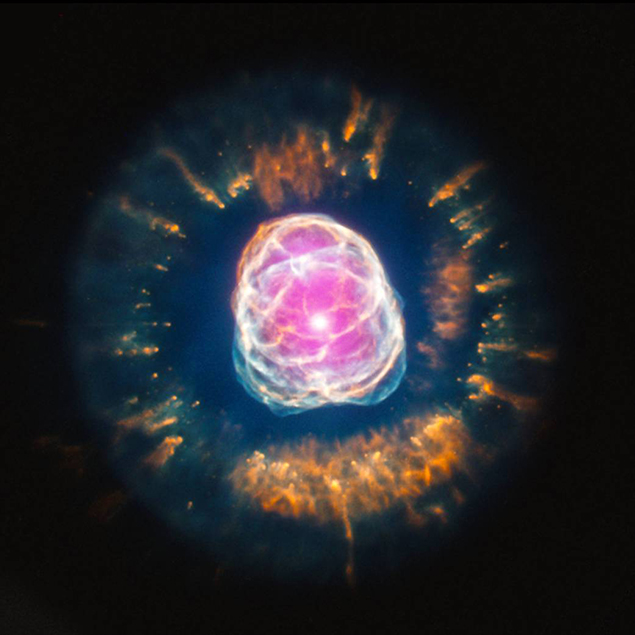winter sky
The winter sky holds a special allure, captivating observers with its crisp clarity and ethereal beauty. It is like the universe's snow globe, shaking up a celestial blizzard of cosmic wonders and freezing the stars in their tracks. From the stars' dazzling brilliance to the moon's tranquil glow, the winter sky invites contemplation and wonderment. But what exactly makes the winter sky so enchanting, and what secrets does it hold?
One question about the winter sky often arises is why it appears more apparent and vibrant than other seasons. The answer lies in the atmospheric conditions unique to winter. The winter atmosphere produces conditions that suppress haze and moisture to the extent that outer space directing the light downwards becomes even shimmering and vivid. The air is generally less humid, and the atmosphere is more stable, which characterizes stargazing as a less turbulent and, therefore, great option because there is less moisture and turbulence that prevent other celestial bodies from being seen.
Colder weather is known to thin down airborne haze and pollution, thus increasing the visibility of nighttime views. Consequently, the stars twinkle vividly, mutilated by the dark background. You pick your head up after a lengthy inspection and find that you are the only person in the world whose view is flooded by the Milky Way.
Another question that stimulates curiosity is why certain constellations and celestial objects are more prominent during winter. One such example is Orion, the mighty hunter, which dominates the winter sky with its distinctive pattern of stars.
The Mythology of Orion
What is the stellar meaning of the Orion constellation?
In ancient Greek mythology, Orion was a great, honorable, and prosperous hunter. As per one myth, gods that were also present at that time set Orion among the stars immediately after his death, and now he remains as the constellation forever. The mythological storytelling says that Orion was killed by a scorpion sent by Aphrodite, the goddess of the night, and is denoted by Scorpius, the scorpion constellation opposite of which is Orion in the skies on Earth.
What are the wonders of the winter sky?
- The winter sky offers opportunities to witness breathtaking astronomical events such as meteor showers and planetary alignments.
- Spectacular ViewThe winter sky offers a breathtaking display of countless stars, creating a mesmerizing tapestry of celestial beauty.
- The winter sky presents a stunning array of stars, weaving a captivating tableau of celestial splendor that peaks during Christmas.
- Planetary AlignmentsWinter is also a time when certain planets, such as Mars or Venus, appear in the sky during specific times of the day. These planets can often be spotted near the horizon during dawn or twilight hours, adding an extra layer of interest to the winter sky.
Cultural and Spiritual Significance of the Winter Sky
Observing the winter sky can inspire a deeper appreciation for the natural world and our place within the cosmos. It is a treasure trove of celestial wonders, from the sparkling tapestry of stars to the excitement of meteor showers and planetary alignments.
Transitioning from the scientific exploration of the winter sky to its cultural and spiritual significance, it's evident that this celestial realm has played a profound role in human history and mythology. Across cultures and civilizations, the winter sky has been imbued with symbolic meaning and significance, providing inspiration, guidance, and wonder. In ancient times, people looked to the stars for navigation, marking the passage of time, and interpreting celestial omens.
The winter solstice, the shortest day of the year, has been celebrated in various cultures as a time of renewal, rebirth, and the triumph of light over darkness. In addition to its practical and symbolic significance, the winter sky inspires artists, poets, and storytellers. Countless works of art, literature, and music have been inspired by the beauty and mystery of the night sky, capturing its essence in various forms of creative expression.
Moreover, the winter sky holds a special place in the hearts of stargazers and amateur astronomers who venture into the cold night air searching for celestial wonders. Armed with telescopes and binoculars, they explore the depths of space from their backyard observatories or remote stargazing sites, marveling at distant galaxies, nebulae, and star clusters. For many, the winter sky offers a sense of connection to something greater than themselves, a reminder of humanity's place in the vast expanse of the universe.

The Enigmatic Nature of M79: A Hidden Gem in the Night Sky
What makes M79 genuinely remarkable? Beneath Orion's feet, the eyes can see the shimmering tapestries of various stars. The M79 is a celestial treasure that glows, calling to gawkers and astronomers distantly. It is situated in Thailand.
Assessing the twilight from the top on a chilly winter night shows it instinctively bent to the old constellation of Orion, distinguished by its bright stars and familiar figure, the delicate beauty beneath will be ignored easily. However, in contrast to the spotlight hunter's foot, it is much more than that global wonder- a globular cluster named Messier 79 (M79), waiting to reveal to the curious ones its mysteries that happened even beyond our most accessible of observations.
M79 might not hold the same celestial renown as other cosmic dwellers, yet it embodies the spirit of a distinctive neighbor who hosts unexpectedly delightful interstellar gatherings. To those seeking cosmic amusement amidst the winter sky, M79 emerges as the celestial comedian. This globular cluster whimsically chose Orion's feet as its ideal hideaway in the cosmic game of hide-and-seek.

Toward the lower region near the feet of the Gemini twins lies another impressive star cluster, M35. It's readily visible through binoculars, and with a standard 10x50 set, you might distinguish some individual stars within it. A small telescope at a modest magnification will grant a splendid observation; it appears more expansive than M41 but has a looser arrangement. Like numerous clusters, its stars exhibit a blue-white hue, yet you'll observe a star tinged with a coppery shade along its northern edge. M35 resembles a lively celestial gathering, playing host to many stars gathered closely together, akin to a family reunion of sparkling siblings. This stellar assembly unveils its genuine splendor when observed through a telescope—a captivating array of stars displaying diverse brightness and hues, forming a stunning mosaic in the celestial expanse.

Heading southwest from Castor, tracing the star patterns that delineate the Gemini twins, we encounter Wasat, also known as Delta Geminorum, shining at a magnitude of 3.5, serving as a convenient guide for our next destination. NGC 2392 occupies the same field of view as Wasat through binoculars or a finderscope, but a telescope is necessary to behold it. NGC 2392, famously known as the Eskimo Nebula, stands as a celestial masterpiece in the wintry canvas of the cosmos. For astronomers seeking celestial wonders in the winter sky, NGC 2392 is a divine jewel—a testament to the beauty and complexity of the universe.
This breathtaking nebula, nestled amidst the stars, reveals intricate details and wispy structures when observed through the lens of a telescope. The delicate filaments and intricate patterns within NGC 2392 resemble the intricate frosty patterns on a winter morning, evoking a sense of cosmic awe and wonder. May the winter sky continue to ignite our curiosity and inspire us to keep exploring the limitless wonders of the cosmos.
On Monday, January 13th, 2025, there will be a Lunar Occultation of Mars. During this celestial event, our Moon will eclipse Mars, completely blocking it from view.






